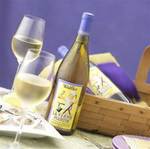(This column appeared originally in the 4/8 issue of Dan’s Papers)
If you’re at all like me, then you like to drink wine every night with
dinner — which can get pretty expensive if you’re drinking twenty-plus
dollar bottles. Long Island’s top wines aren’t cheap, there’s no doubt
about that.
But, there’s an easy, and more affordable, solution — second label wines.
Second label wines aren’t wines made by second-rate producers. On the
contrary, they are well-made, less expensive wines made by some of our
region’s top winemakers. They usually have a different name, different
labels and — this is the best part — lower prices.
So, if these wines are so good (and many of them are), why are they so much cheaper?
It’s quite simple really. For their top or first label wines,
winemakers tend to select the best grapes from the best blocks in their
vineyards. Often labeled “reserve” winemakers often spend much more
time working with these wines. And, the wine often spends more time in
newer oak barrels, which boost the price too.
Second label wines, on the other hand, tend to be blended wines from
lesser grape lots, designed to be consistent year in and year out. But,
in a year with optimal growing conditions the grapes that go into these
wines can be almost, if not as good as those for the best wines. These
are almost always wines for people who want to drink their wines
instead of save them.
Gary Madden, general manager of Lieb Family Cellars, makers of second
label Bridge Lane Merlot ($15) and Bridge Lane Charddonay ($13),
describes them as “wines for everyday enjoyment — good by the pool, by
the barbeque or on the beach. We want to emphasize clean fruit and
drinkability while young, rather than wines that need more time for
aging.” These Bridge Lane wines are consistently good, some of my
favorites for every day drinking.

The La Ferme Martin Merlot and La Ferme Martin Chardonnay (both $13.50)
wines from Wolffer Estate Vineyards are equally delicious with dinner
at home on a weeknight. In fact, winemaker Roman Roth feels that his
second label wines “capture the advantages of our ocean-influenced
climate and result is a perfect food companion. The refined and lively
La Ferme Martin wines offer a great value.” I couldn’t agree more. In
the best years, the La Ferme wines are the best values going.
I’ve long been a fan of Macari Vineyard’s straight-forward Collina 48
wines, and while they’ve decided not to make the white anymore, the
recently released Collina 48 Merlot ($10) is 100-percent Merlot and
made entirely in stainless steel. With a newly designed label, Macari
bills this wine as “all dressed up and read to enjoy, no aging
required.” It’s made for summer quaffing and can take a slight chill
too.
Another pair of recently released, second label wines, labelled “CdB”,
the first such offerings from Castello di Borghese, are even bigger
values, partially because they are only available in bigger, magnum
bottles that are twice the size of a standard bottle. The CdB Red Table
Wine ($14) is an interesting, unique blend of Merlot, Cabernet
Sauvignon, Cabernet Franc and Pinot Noir. It’s a gulpable red that will
be great this summer with grilled burgers and dogs.
The CdB White Table Wine ($12) is primarily Chardonnay with Pinot
Blanc, Sauvignon Blanc and Riesling blended in. Easy-drinking and
fruity, it’s best ice cold as a refreshing sipper by the pool. Both are
infinitely better than most magnum-packaged blends on the North Fork,
which tend to be one-dimensional, bland and without any real character.
Some of these second label wines are even better than the first label
wines from lesser producers. Give them a try. I think you’ll be
surprised at how good these wines are for the money.
Lenn Thompson is a contributing wine writer for Dan’s North Fork. Email him at lenn@lenndevours.com
